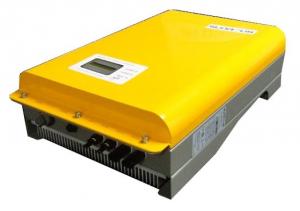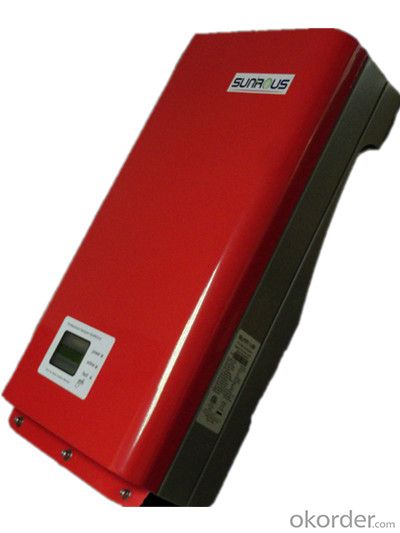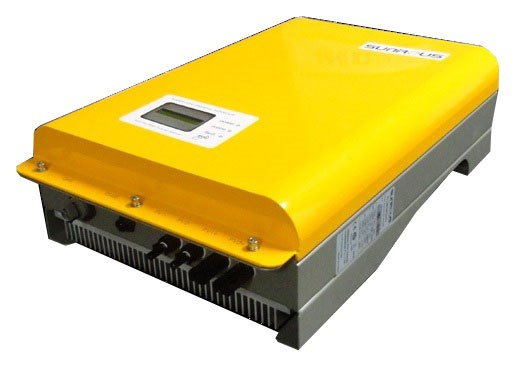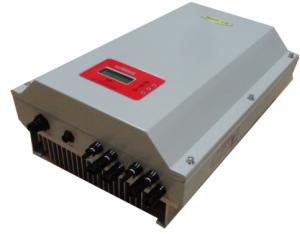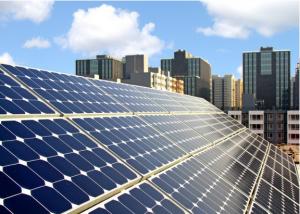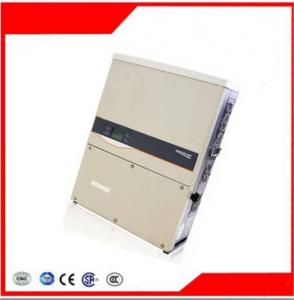Sukam Solar Inverter - Single Phase PV Grid-Tied Inverter for Solar System
- Loading Port:
- Shanghai
- Payment Terms:
- TT or LC
- Min Order Qty:
- 10 cm
- Supply Capability:
- 800 cm/month
OKorder Service Pledge
OKorder Financial Service
You Might Also Like
Single Phase PV Grid-Tied Inverter for Solar System
5 years warranty
·Sealing stainless steel shell, suitable for indoor or outdoor installation
·Using industrial frequency transformer in isolation,ensure system safety and reliability
·The highest efficiency achieves 94. 8% have satisfactory cosmetic
·Adopt connectors type cable connection, easy operation and installation
·With multiple independent MPPT channel function to ensure maximum photovoltaic system
capacity
·Has the active and passive double prevent island function
·Working temperature range - 25 to 50 ℃
LF series 0.6kw — 1.5kw
Features: Single stage inverter is the main characteristic of this product , in which power grade period compared with other topological structure has higher conversion effciency and reliability

LF series 2.0kw — 2.8kw
Features: Double channel input, and their respective independent of the MPPT function, make photovoltaic array installation is more fexible.

- Q: Can a solar inverter be used with a solar-powered water pumping system?
- Yes, a solar inverter can be used with a solar-powered water pumping system.
- Q: How does a solar inverter handle voltage and frequency variations caused by grid faults?
- A solar inverter is designed to handle voltage and frequency variations caused by grid faults through a process known as grid support or anti-islanding function. When a grid fault occurs, such as a sudden drop in voltage or frequency, the solar inverter detects the disturbance and responds accordingly. To handle voltage variations, the solar inverter typically incorporates a voltage control mechanism. It monitors the grid voltage continuously and adjusts its own output voltage to match the grid voltage level. In the event of a voltage drop or spike caused by a grid fault, the inverter adjusts its output voltage accordingly to maintain a stable and safe operating condition. This helps protect both the solar system and the grid from potential damage. Similarly, the solar inverter also deals with frequency variations caused by grid faults. It constantly monitors the grid frequency and adjusts its own output frequency to match the grid frequency. If a grid fault results in a sudden change in frequency, the inverter responds by adjusting its own frequency accordingly. This ensures that the solar system remains synchronized with the grid and continues to supply power without disruptions. Additionally, solar inverters are equipped with anti-islanding protection, which means they are designed to quickly disconnect from the grid in the event of a grid fault. This is a safety measure to prevent the solar system from continuing to supply power to a faulty grid, which could pose a risk to utility workers trying to repair the fault. Overall, a solar inverter's ability to handle voltage and frequency variations caused by grid faults is crucial for the safe and efficient operation of a solar power system. By continuously monitoring the grid conditions and adjusting its output accordingly, the inverter ensures that the solar system remains in sync with the grid and provides stable and reliable power.
- Q: Can a solar inverter be used with a smart home automation system?
- Certainly! A smart home automation system can indeed work together with a solar inverter. Nowadays, many solar inverters come with communication capabilities built-in, like Wi-Fi or Ethernet connectivity. This means that they can easily be integrated into a smart home automation system. This integration allows homeowners to remotely monitor and control their solar power production and usage using a smartphone app or a central control panel. By having a smart home automation system, users can keep track of real-time energy generation, make adjustments to settings, and receive notifications about system performance or any potential issues. This integration not only enhances the convenience and efficiency of managing solar power but also enables better optimization and synchronization with other smart devices and appliances in the household.
- Q: What is the role of a display or user interface in a solar inverter?
- The role of a display or user interface in a solar inverter is to provide users with real-time information about the performance, status, and operational parameters of the inverter system. It allows users to monitor the energy production, voltage levels, current flow, and any potential faults or errors. Additionally, the user interface enables users to configure and control various settings of the solar inverter, such as output power limits, grid synchronization, and system diagnostics.
- Q: Does a solar inverter require any additional cooling or ventilation?
- Yes, a solar inverter typically requires additional cooling or ventilation to operate efficiently and prevent overheating. The heat generated during the conversion of DC to AC power needs to be dissipated to maintain optimal performance and prolong the lifespan of the inverter.
- Q: What is the difference between a central inverter and a string inverter?
- A central inverter is a type of inverter that is used in large-scale solar installations. It takes the direct current (DC) electricity generated by multiple solar panels and converts it into alternating current (AC) electricity that can be used to power homes or businesses. A central inverter is typically located in a central location, such as a utility room or basement. On the other hand, a string inverter is a type of inverter that is used in smaller-scale solar installations. It also converts DC electricity from multiple solar panels into AC electricity, but it does so at the string level. This means that each string of solar panels has its own dedicated inverter. String inverters are usually installed near the solar panels themselves, which can make them more convenient for maintenance and troubleshooting. In summary, the main difference between a central inverter and a string inverter is the scale of the solar installation they are used in and their physical location. Central inverters are used in larger installations and are located centrally, while string inverters are used in smaller installations and are located near the solar panels.
- Q: What maintenance is required for a solar inverter?
- Regular maintenance is required for a solar inverter to ensure its optimal performance. This includes cleaning the inverter and its components to remove any dust or debris, inspecting and tightening electrical connections, checking and replacing any faulty or worn-out parts, monitoring the inverter's performance and efficiency, and keeping track of any software updates or firmware upgrades provided by the manufacturer. It is also important to regularly clean and maintain the solar panels and other associated equipment to ensure the inverter's functionality.
- Q: Can a solar inverter be connected to a generator?
- Yes, a solar inverter can be connected to a generator. This allows the solar energy system to work in conjunction with the generator, providing additional power when the solar energy is insufficient or unavailable. The generator serves as a backup power source, ensuring a continuous supply of electricity.
- Q: Can a solar inverter be used in low light conditions?
- Yes, solar inverters can still be used in low light conditions. However, the efficiency of the solar inverter may be reduced as it relies on sunlight to convert solar energy into usable electricity.
- Q: What is the maximum AC power output of a solar inverter?
- The maximum AC power output of a solar inverter depends on its size and capacity. Generally, residential solar inverters have a maximum AC power output ranging from 1 kilowatt (kW) to 10 kW, while larger commercial or utility-scale inverters can have outputs exceeding 1 megawatt (MW).
Send your message to us
Sukam Solar Inverter - Single Phase PV Grid-Tied Inverter for Solar System
- Loading Port:
- Shanghai
- Payment Terms:
- TT or LC
- Min Order Qty:
- 10 cm
- Supply Capability:
- 800 cm/month
OKorder Service Pledge
OKorder Financial Service
Similar products
Hot products
Hot Searches
Related keywords


